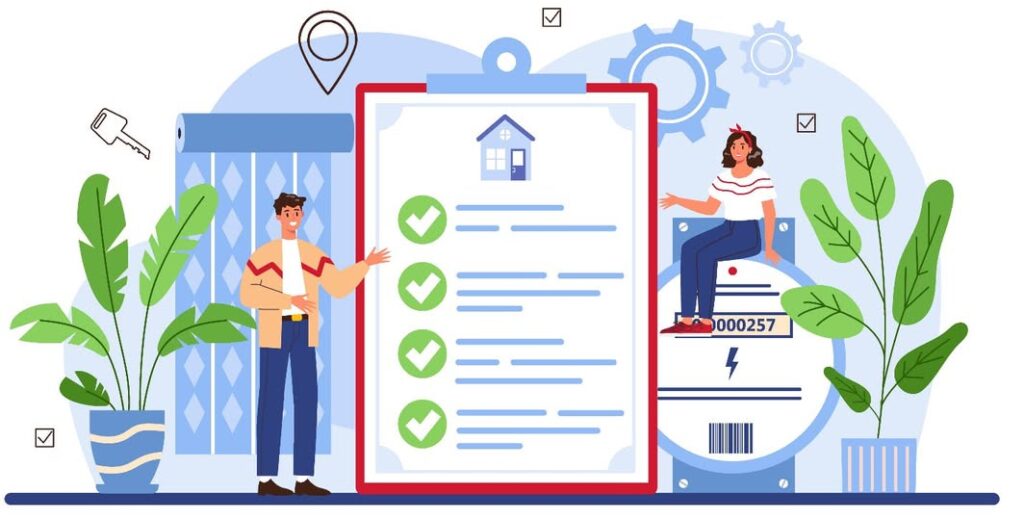
Where maximising rental returns is concerned, most landlords and agents target obvious variables – location, local demand, tenant screening, and upkeep. But beneath these surface variables lies a quieter but more influential force that propels your investment: your inventory system. Too often undervalued, an upgraded inventory system is a silent partner that operates tirelessly in the background, protecting your rental yield, maintaining property conditions, and creating honest tenant relationships.
Here, we’ll discuss how having a solid, technology-based inventory process in place not only avoids unnecessary losses but also enhances operating efficiency, fortifies legal safeguards, and ultimately leads to better long-term returns.
Why Inventory Management Matters More Than You Think
Inventory management is often seen by landlords as a tick-box exercise — something to do when a tenancy begins and not look at again until the day the tenant leaves. But this attitude can end up costing owners dear. Taking an accurate inventory isn’t merely recording furniture or ticking that there’s a scratch on the wall. It’s a legally accepted document that will be crucial proof if a dispute over damages or deductions from a deposit arises.
A comprehensive and regularly refreshed inventory system is the backbone of every successful tenancy. It establishes expectations on day one, avoids misunderstandings, and protects both landlord and tenant. In short, it’s one of the best lines of defence for maintaining your rental yields.
The Cost of Overlooking Inventory
Without a system in place, landlords are opening themselves up to risks that have a direct impact on their bottom line:
- Deposit disputes: Lack of clear evidence for justifying deductions results in frequent full deposit refunds — despite actual damage.
- Repair delays: Without current records, required maintenance can be overlooked, resulting in problems growing and costing more.
- Lowered property value: Irregular maintenance and undocumented damage lower your property’s attractiveness and long-term market value.
- Tenant mistrust: A poor or unfinished inventory leaves openings for disagreement, undermining trust and complicating tenant relations.
Each of these problems can eat into your rental returns in the long run. An ordered, systematic approach to inventory avoids them early and firmly.
Tech-Driven Inventory: The Smart Landlord’s Secret Weapon
Those days of scribbled notes, never-ending spreadsheets, and assorted photo folders are a thing of the past. Landlords today are embracing digital solutions that simplify the whole inventory process. An expertly crafted Inventory App enables property professionals to record, store, and retrieve information promptly and securely while minimising human error and admin time.
These apps are usually loaded with features like photo and video recording, voice-to-text transcription, digital signing, and cloud synchronising in real time. Through the automation of the important processes and the centralisation of data, they ensure that no detail is overlooked, and each update is documented correctly.
Moreover, inventory solutions on the mobile also enable property managers to directly produce reports from the field – at check-ins, check-outs, and in-between inspections – thus making the process of inventory management much more efficient.
Condition Reports: Your Evidence in Disputes
It is a staple of any professional inventory system, not only outlining the condition of the property and its contents at the start of a tenancy but also incorporating time-dated photographs, cleanliness notes, wear and tear, and the existence (or lack thereof) of safety devices such as smoke and carbon monoxide alarms.
This document becomes critical if a deposit dispute ends up in the hands of an adjudicator. Without it, landlords are on weak ground, tending to lose cases through insufficient evidence. A professional condition report, though, leaves nothing open to doubt, providing landlords with a strong body of evidence to back their case.
Further, tenants also benefit from such transparency. When both parties agree to the documented condition at the outset, trust is established early, and end-of-tenancy discussions are less likely to turn confrontational.
Protecting Yield Through Maintenance and Planning
A better inventory system also acts as a preventative measure. By picking up on small problems early on – like a dripping tap, loose board, or mould signs – landlords can arrange maintenance in good time, preventing larger, more costly issues later. Pre-emptive maintenance not only keeps maintenance costs down unexpectedly but keeps the property in prime condition for further market-rate rents and shorter voids.
In the long term, consistently monitoring wear and tear over tenancies enables landlords to budget better for refurbishment and refitting. It gives them knowledge of when carpets were last renewed or when appliances began to wear out, enabling more intelligent capital spending decisions. All this helps maintain, and even increase, rental yields.
Legal Compliance and Peace of Mind
With continuously changing legislation in the private rented sector, more specifically aspects like health and safety or protection of deposits, landlords require systems that ensure they remain compliant. An itemised inventory — kept up to date and backed by robust technology — indicates a motivation to follow the law and adhere to professional standards.
This not only minimises legal exposure but also brings peace of mind. Having a digital record of condition reports, tenant acknowledgement, and safety checks means you’re never unprepared in case something goes wrong.
Conclusion: Don’t Leave Yield to Chance
Though it won’t make the news or be the talk on the investment circuit, your inventory system is instrumental in the fiscal well-being of your rentals. It is the unseen business partner that keeps loss at bay, assists with compliance with the law, creates good relations with tenants, and maintains your property in good shape.
Landlords who invest in a better system, ranging from digital tools to precise condition reporting, are likely to reap stable, sustainable returns. Where costs are on the rise and regulation is in tightening mode, that’s not only a good notion, it’s necessary.





